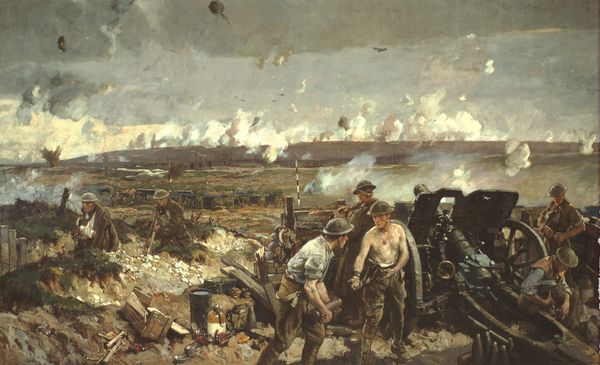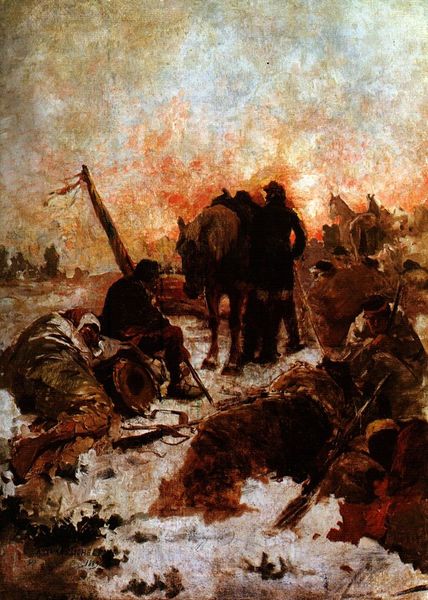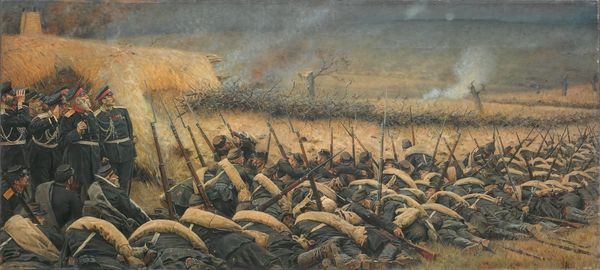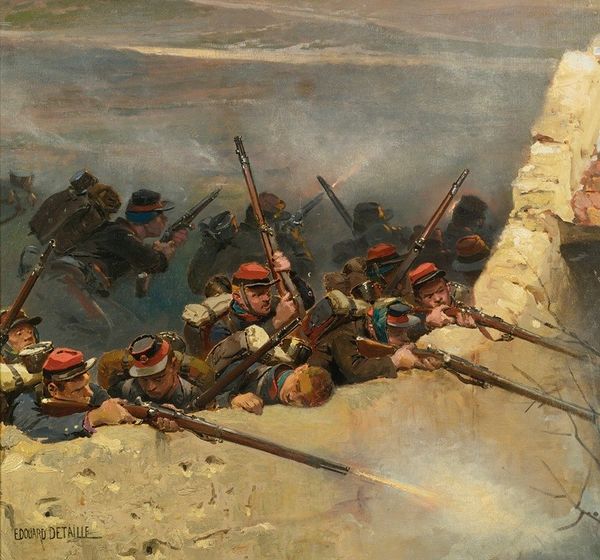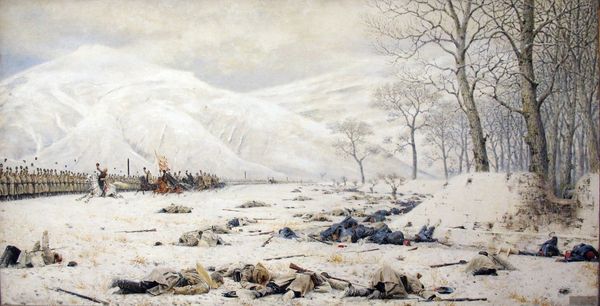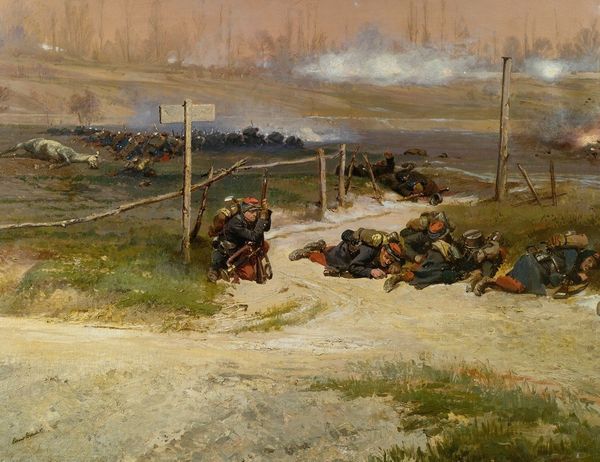
Copyright: Veniamin Kremer,Fair Use
Curator: What an incredibly dynamic scene. The flurry of movement, the cold palette… it’s unsettling. Editor: I agree. And look at the layering and application of oil paint; thick in places, thinned out in others, almost frantic in its depiction of what the artist, Veniamin Kremer, titled "The Marines on the Fight at the Leningrad Front in January 1941". He painted this in 1951. Curator: The context here is vital. Kremer’s work is not merely a depiction of a historical event, but a carefully constructed narrative within the larger framework of Soviet social realism, even edging into expressionism, perhaps revealing underlying tensions. We must ask ourselves, whose narrative is being amplified? Editor: Exactly. Consider the conditions in which this was made: a state-commissioned piece utilizing oil paints, a readily available and, frankly, propagandistic tool. The very process echoes the enforced collectivism the image idealizes. Note how the land is mostly flat, making way for a sense of collective endeavor and blurring individual sacrifice. Curator: And what sacrifices were actually made? Were marginalized ethnic groups conscripted into service disproportionately? This painting doesn't allow us to delve into such intricacies. It’s a potent symbol of a very specific interpretation of heroism. It's hard to get any accurate figures for recruitment into service but this era shows little space for individuality, instead placing enormous value on national identity through propaganda. Editor: Indeed, national identity carefully produced and sold as if crafted, made by collective action for collective benefit, not one crafted under duress. However, Kremer's impasto and bold strokes create an undeniable visceral quality. There’s a definite energy in the very materiality. Curator: Perhaps that tension between individual artistic expression and the propagandist message adds an unintended layer of complexity that reflects something of lived Soviet experience. Editor: Absolutely. Examining the tangible aspects, the paint, the brushstrokes, forces us to consider both the intended message and its inherent contradictions, revealing the complicated intersection of art and socio-political control. Curator: Seeing it through this intersectional lens provides us with much to contemplate. Editor: I couldn’t agree more.
Comments
No comments
Be the first to comment and join the conversation on the ultimate creative platform.

